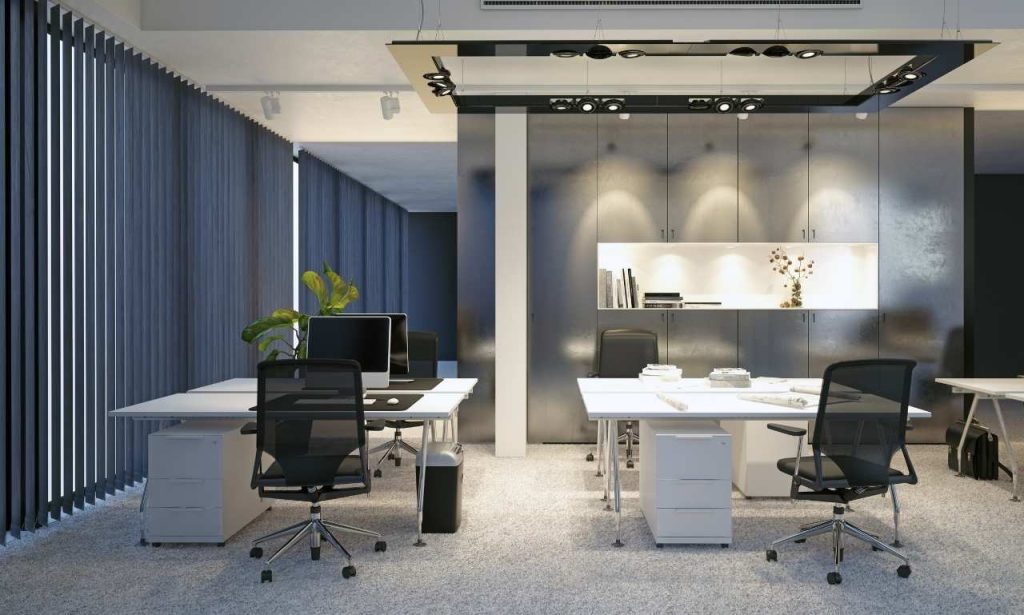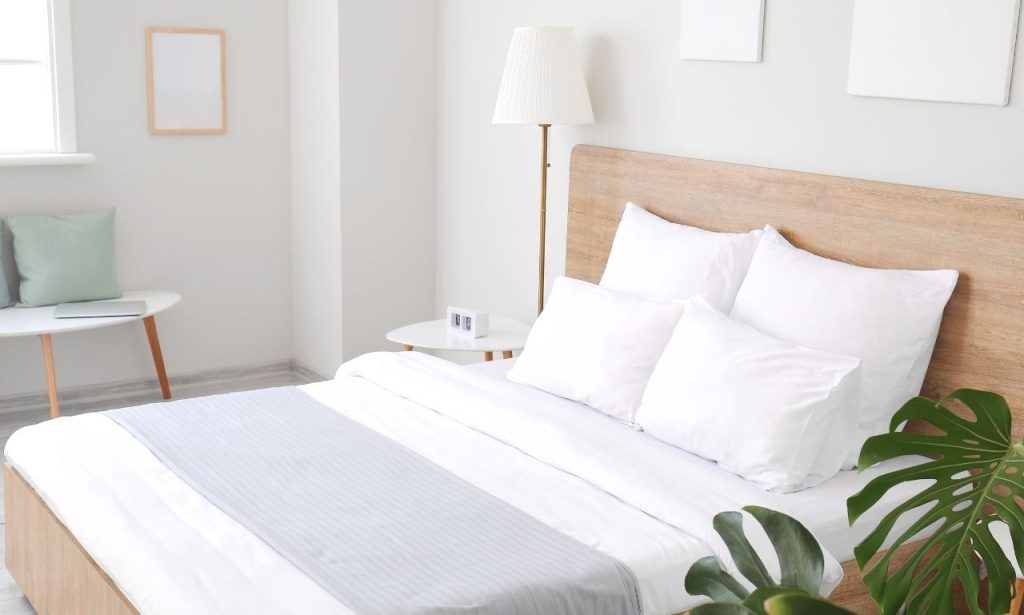Walking into a beautifully decorated home feels magical. You know the feeling—those spaces that ooze luxury and sophistication. The good news? You don’t need a fat wallet to achieve this look. I discovered this firsthand when I moved into my first apartment after college. My budget was microscopic, but my design dreams were enormous. Through trial and error, I learned some genius tricks. Simple changes can dramatically transform your space. Strategic additions can create that high-end feel without emptying your bank account. The secret lies in knowing where to invest your limited resources. Focus on details that catch the eye. Pay attention to elements that elevate your space instantly. Ready to make your home look like a million bucks? Let’s dive into how to make your house look expensive on a budget.
Add Molding, Wall Trim, or Architectural Details

Nothing says expensive quite like architectural details. These elements instantly elevate ordinary walls to extraordinary statement pieces. Crown molding frames your ceiling with elegance. Chair rails add dimension to otherwise flat walls. Wainscoting brings character and depth to any room. These features used to be signs of craftsmanship in older homes. Today, they’re surprisingly affordable and sometimes manageable as DIY projects.
Where to Start with Architectural Details
Begin with one room that needs visual interest. The living room or dining room often benefits most from these upgrades. Pre-made molding options at hardware stores come in various styles. Some are even made of lightweight materials that are easier to handle. Installation doesn’t always require professional help. Many homeowners tackle simple molding projects over a weekend. The transformation will amaze you and your guests.
Budget-Friendly Alternatives
Can’t commit to actual molding? Consider painted-on versions that create similar effects. Decorative tape can outline geometric patterns that mimic expensive paneling. Even carefully placed picture frames can create the illusion of wall panels. The key is consistency in your approach. Select one technique and apply it thoughtfully throughout your space. This creates cohesion rather than confusion.
Go Large with Wall Art
Tiny scattered pictures scream budget constraints. A single oversized piece commands attention and creates impact. Large-scale art makes your ceiling appear higher. It draws the eye upward and creates visual interest. This trick works particularly well in small spaces. The contrast between limited square footage and grand art creates intrigue.
Finding Affordable Large Art
You don’t need gallery connections to find impressive pieces. Many online retailers offer large canvas prints at reasonable prices. Local art schools often host student exhibitions with affordable original works. Even fabric stretched over a frame can become striking wall art. Consider enlarging your own photography for a personal touch. Black and white images look particularly sophisticated when printed large.
Making a Statement
When selecting your centerpiece, consider the room’s color scheme. Art that complements your existing palette creates harmony. Bold pieces with simple backgrounds work well in neutral rooms. The frame matters almost as much as the art itself. A quality frame transforms even inexpensive prints into luxurious decor. Position your statement piece at eye level for maximum impact.
Change Out Your Hardware
Those small metal details throughout your home speak volumes. Cabinet knobs, drawer pulls, and doorknobs are like jewelry for your house. Replacing builder-grade hardware creates instant luxury. This upgrade requires minimal effort but delivers maximum impact. The transformation can happen in an afternoon. The results will last for years to come.
Selecting the Right Hardware
Choose finishes that complement your existing decor. Brass and gold tones add warmth to traditional spaces. Matte black creates contemporary contrast in modern rooms. Mixed metals work when distributed thoughtfully throughout your home. Consider the scale of your furniture when selecting new hardware. Larger pieces can handle more substantial hardware elements. Smaller pieces need more delicate treatment.
Beyond the Kitchen and Bath
Don’t stop at cabinets and drawers. Light switch plates can be upgraded for a few dollars each. Outlet covers in decorative finishes eliminate those white plastic eyesores. Even upgrading your air vents to decorative versions makes a difference. These details might seem minor, but they create a cohesive, expensive-looking whole. The cumulative effect of these small changes creates big impact.
Declutter
Expensive homes share one universal trait—they’re never cluttered. Open space signals luxury more than any decorative item ever could. Too many knick-knacks create visual noise. A carefully curated collection looks intentional and sophisticated. This upgrade costs nothing but time and determination. The payoff is immediate and dramatic.
The Art of Meaningful Editing
Start by removing everything from horizontal surfaces. Return only items that serve a purpose or bring genuine joy. Group similar objects together for visual cohesion. Odd numbers create more interesting arrangements than even numbers. Three well-chosen items trump seven random ones every time. Give important pieces room to breathe and be appreciated.
Creating Visual Breathing Room
Each room needs negative space to balance its decorative elements. Think of space as a luxury in itself. Allow some shelves to remain partially empty. Keep some wall areas completely bare. This restraint signals confidence in your design choices. It also creates a sense of calm throughout your home. Even budget furnishings look expensive when given proper space.
Streamline Your Gallery Walls
Family photos deserve display but require strategic presentation. Random frames create busy, budget-looking walls. Coordinated frames create cohesive, expensive-looking displays. The content becomes secondary to the presentation. This creates a more sophisticated overall impression. Gallery walls need planning to look intentional rather than accidental.
Creating Cohesion
Choose frames in complementary finishes rather than identical ones. Black, white, and gold frames work beautifully together. Maintain consistent matting throughout your gallery display. The space between frames should be equal for a polished look. Lay out your arrangement on the floor before hanging anything. This prevents unnecessary wall damage during rearrangement.
Content Considerations
For truly sophisticated displays, consider the images themselves. Black and white photos create instant elegance. Sepia tones add warmth while maintaining visual cohesion. Color photos work best when their palette is similar. Consider the surrounding wall color when selecting your frames. The right combination can make even simple snapshots look gallery-worthy.
Add Flowers or Plants
Living elements breathe life into any space. Fresh flowers signal attention to detail and everyday luxury. Houseplants add organic texture and dimension to rooms. These natural elements connect expensive-looking spaces to the natural world, creating depth that purely decorative items cannot achieve.
Low-Maintenance Options
Not everyone has a green thumb or flower shop budget. Realistic faux plants have come a long way in recent years. Quality artificial greenery can fool even discerning eyes. Strategic placement matters more than quantity. One statement plant beats several mediocre specimens. Focus on vessels as much as the plants themselves.
Plant Placement Principles
Place taller plants in room corners to draw the eye upward. Use smaller plants as table centerpieces or bookshelf accents. Consider how light interacts with your greenery throughout the day. Plants with interesting shadows can create free art on your walls. Even grocery store flowers look expensive in simple, elegant containers.
Use White Bed Linens

Hotels understand the power of crisp white bedding. This classic choice signals cleanliness and luxury. White linens create a canvas for other bedroom elements, making even budget furniture look more expensive. This approach works in traditional and contemporary spaces alike. The key lies in quality and presentation.
Creating the Hotel Effect
Thread count matters less than linen cleaning and pressing. Iron those sheets for that truly luxurious hotel feeling. Add textural contrast with throws and decorative pillows. Layer different white tones for sophisticated depth. Remember that perfect hospital corners make any bed look more expensive. These details take minutes but transform the entire room.
Maintaining the Look
White bedding requires some maintenance to keep its luxury appeal. Have backup sets for quick changes when needed. Invest in quality stain removers for inevitable mishaps. Consider the material as well as the color. Cotton percale offers crispness while sateen provides subtle sheen. Both create that coveted high-end hotel aesthetic.
Conclusion
Creating an expensive-looking home doesn’t require a designer budget. Strategic changes make more impact than random expensive purchases. Focus on architectural details that frame your space. Invest in large-scale art that commands attention. Update small hardware elements throughout your home. Declutter ruthlessly to create breathing room. Display photos and art in cohesive, thoughtful ways. Add living elements that connect to the natural world. Choose classic white bedding for that hotel luxury feel. These changes transform ordinary spaces into extraordinary ones. The best part? Your bank account remains happily intact.
Also Read: How to Clean Your House Fast
FAQs
Decluttering creates immediate impact with zero cost. Remove excess items from surfaces and organize what remains.
Start with public spaces like living rooms and entryways. These areas create first impressions for visitors.
Neutral palettes with consistent undertones create sophisticated foundations. Add richness through textures rather than bold colors.
Layer lighting at different heights. Include ambient, task, and accent lighting. Replace dated fixtures with modern alternatives.


